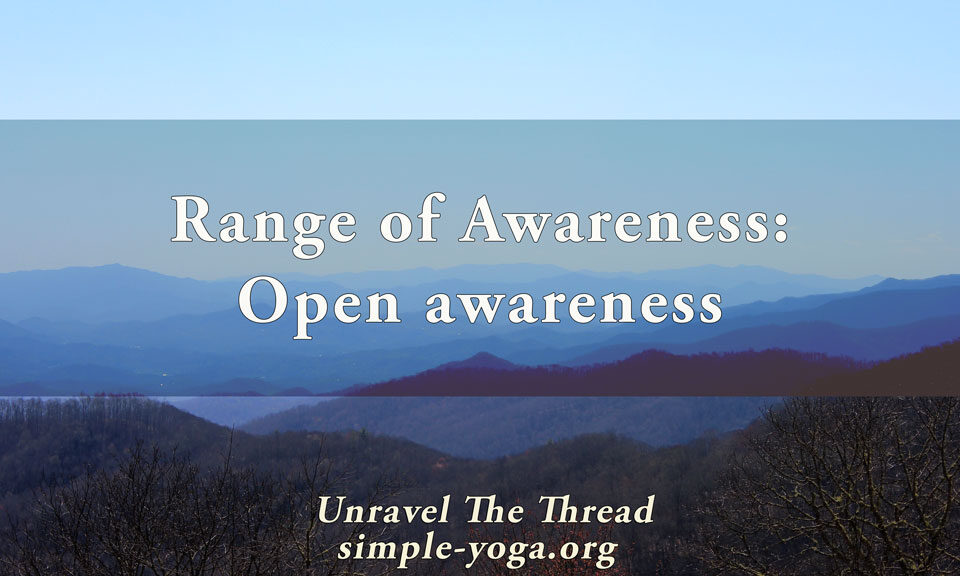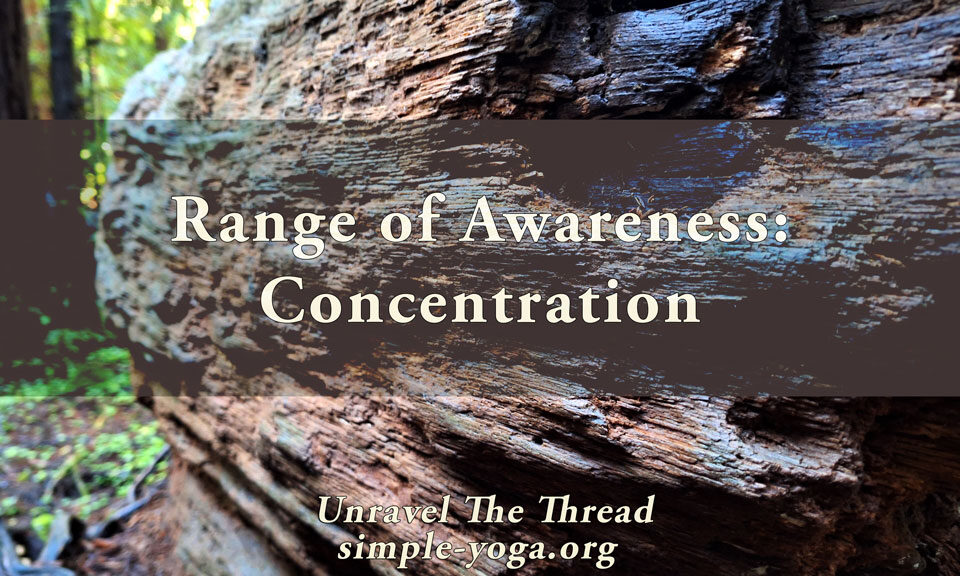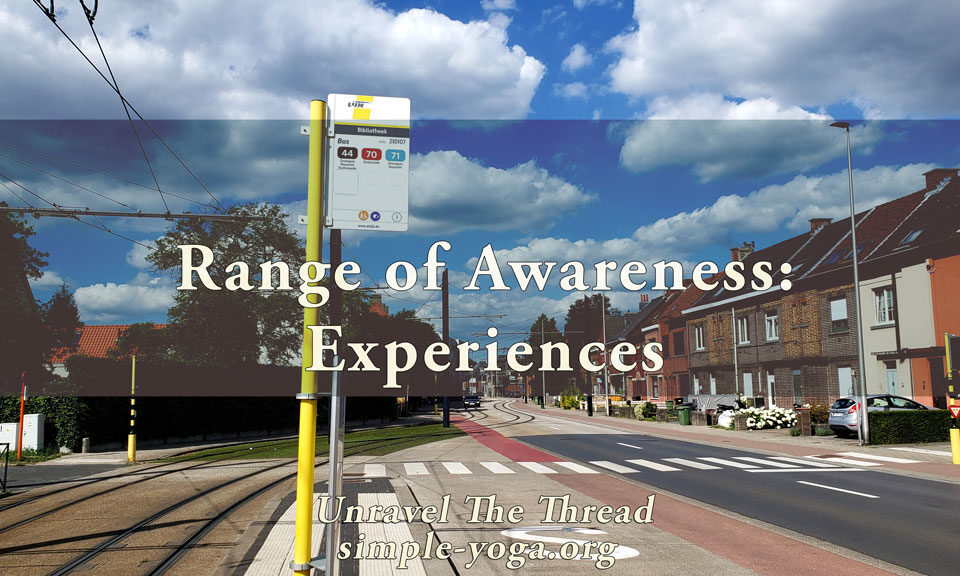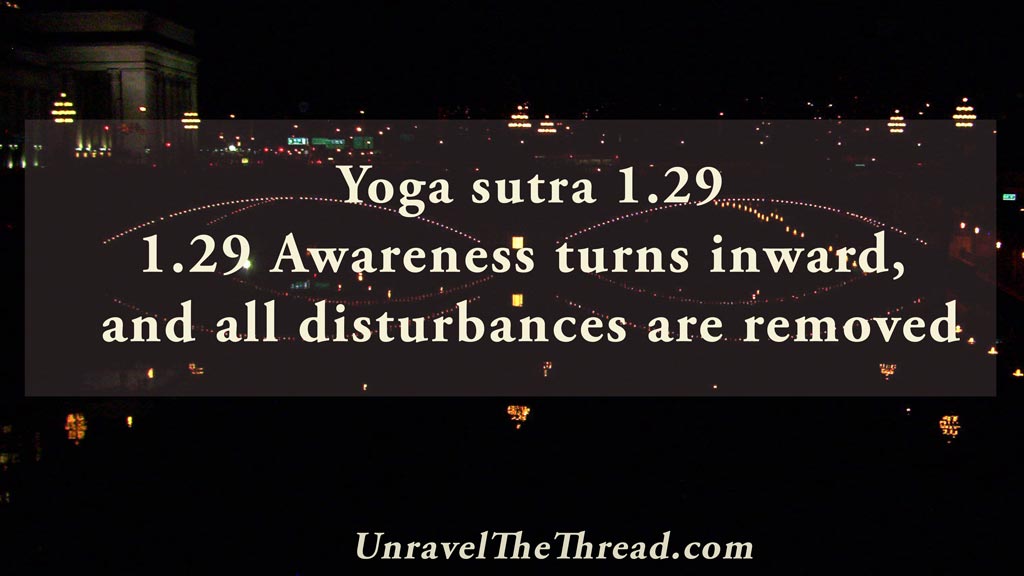
1.29 Awareness turns inward
October 11, 2019
1.31 Symptoms of distractions and obstacles
October 27, 20191.30 Distractions and Obstacles
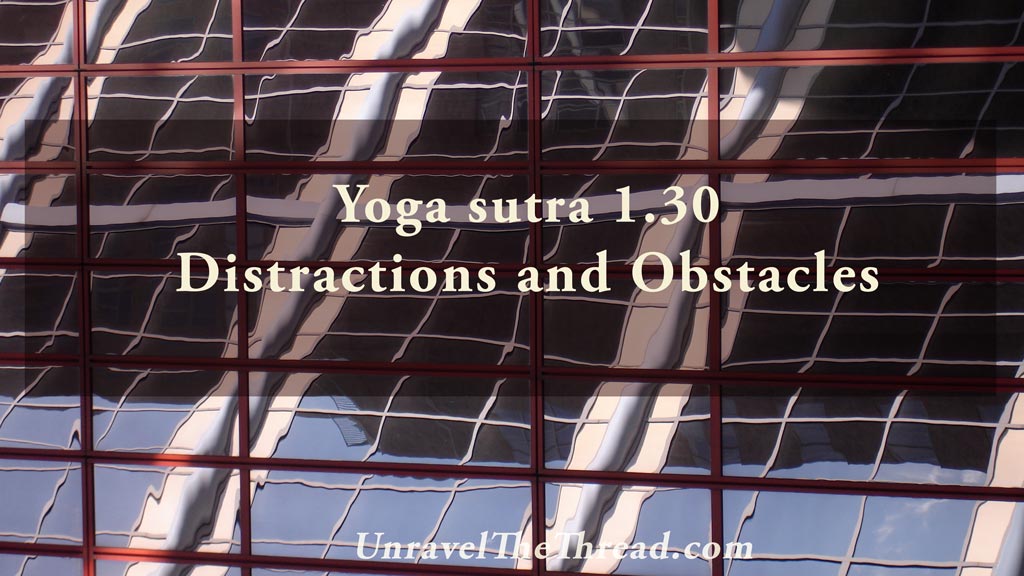
1.30 The distractions (vikshepa) and obstacles (antaraya) on the path to deeper inner stillness and inner silence are disease (vyadi), dullness (styana), doubt (samshaya), carelessness (pramada), laziness (alasya), indulgence (avirati), confused perception (bhranti darshana), inability to be grounded (alabdha bhumikatva) and inconsistency (anavasthitatvani).
The previous sutra presented the results of the japa practice using OM: awareness grows, and the obstacles are removed. This sutra now offers a comprehensive list of the obstacles mentioned. The sutras that follow will explain the symptoms of these disturbances and distractions as well as a strategy and a variety of methods to deactivate those disturbances. It is a fact that most, if not all, practitioners will find multiple distractions and obstacles pulling them away from a natural state of calm, integration and inner harmony. Those distractions take many shapes and forms and may affect you at different levels. Almost certainly, all of us have experienced some or all these distractions and know that when we are not feeling well and have some illness (vyadhi), it is difficult to pay attention to anything else other than the pain or discomfort we are experiencing. In cases where there is chronic pain, this also generates feelings of helplessness and hopelessness. Similarly, stiffness, apathy and rigidity (styana) disconnect us from feeling alive and vibrant. Hesitation, doubt and uncertainty (samshaya) often undermine our intention and our commitment to our life. Negligence and carelessness (pramada) betray our disconnection from presence. Being unmotivated, idle and without energy (alasya) preclude us from participating in each moment with focus and intention. Overindulgence and chasing after our senses without moderation (avirati) will also keep distracting us from our intention. Confusion, wavering and vacillating perspective (bhranti darshana) lead us astray from our goals. Feeling unsettled and without support (alabdha bhumikatva) makes it impossible to find traction on our path. When we feel like we are not connected to something that lasts (anavasthitatvani) it is challenging to find a meaningful objective to move towards, causing us to feel like we are just floundering in an ocean of irrelevant busyness. As a result, intermittent and inconsistent effort keeps us fluttering, inhibiting our progress. These distractions tend to band together. When one is active, it usually attracts other disturbances.
As you consider the following questions, remember that these are instruments for inquiry, not for finding fault and self-judgment. What are the distractions that keep you from committing wholeheartedly to your life? Can you see any patterns that result in you feeling unwell? Where do you feel rigid or stuck in mind, body, breath, emotions and life? What causes you to doubt your goals and yourself? What leads you to be careless? What are the effects of your carelessness? What circumstances or situations are conducive to your not giving your energy to what is important to you? When and how do you tend to overindulge? How do you know that your perspective is clear and accurate? Are you doing what you think you are doing? How are you ensuring that you are moving toward greater balance and integration? Are you physically, mentally and emotionally stable?
One way of putting this sutra into practice, is to make each question the guiding principle for your day or your week. In other words, you use each question as a filter to interpret what happens during your week or day. What do you discover when you do this? Does looking at your life through these filters suggest adjustments to your intention and actions?
As usual, one more way of exploring the meaning of this sutra is by chanting it.
You can choose to chant it in its traditional form with some of the words coming together:
1.30 vyādhi styāna saṃśaya pramādālasyāvirati bhrāntidarśanālabdhabhūmikatvānavasthitatvāni cittavikṣepāḥ te antarāyāḥ
व्याधि स्त्यान संशय प्रमादालस्याविरति भ्रान्तिदर्शनालब्धभूमिकत्वानवस्थितत्वानि चित्तविक्षेपाः ते अन्तरायाः ॥३०॥
Another option is to chant each word in the sutra individually:
- vyādhi
- styāna
- saṃśaya
- pramāda
- ālasya
- avirati
- bhrānti
- darśana
- alabdha
- bhūmikatva
- anavasthitatvāni
- citta
- vikṣepāḥ
- te
- antarāyāḥ
Unravel the thread is now available as a book!
If you find Simple-Yoga.org and Unravel the thread useful, consider supporting my labor with a donation, you may also donate using PayPal or Venmo. Thank you!

